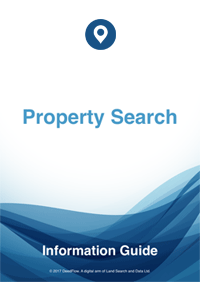Legal Rights of Way
Contents
Overview
A right of way in England and Wales may be either be a public right of way or a private right of way. Public Rights of Way are discussed in a different article. Most rights of way are granted expressly, i.e. deliberately and as part of a Deed.
Express Right of Way
A private right of way is usually created expressly, i.e. with a deliberate intention to create it, and it must relate to a right of way across adjoining land. There is no right of way between adjacent land that is owned by the same person. A Private right of way is a type of easement. It is the right to pass along a path, track or direction on an adjoining property. It may be limited in scope, e.g. it may be a right over which you can pass on foot only, or it may allow you to drive along it.
Having a right of way across your neighbour’s land does not confer ownership over it, but only allows you to use it as described in the legal documents that have been registered at the Land Registry.
Legal Documents
There are three legal documents that describe, illustrate and define a private right of way. These are:
- Title Register
- Title Plan
- Deed of Easement (or another Deed in which the easement is created).
Title Register
The A section of the Title Register will provide details of a right of way that benefits the property, i.e. it allows the owner to use the right of way. The C section of the Register will provide details of a right of way that burdens the property, i.e. it allows your neighbour to access the right of way on your property.
It follows from the above that one of the adjoining properties will contain details of the right of way in its A section, and the other in its C section.
Title Plan
The Title Plan for each property will illustrate the right of way by tinting the part of the property so affected. The Title Register will describe what the coloured tints in the Plan represent. The Land Registry usually follow their convention to tint the right of way benefitting the property in brown and the the right of way burdening the property in blue.
Deed of Easement
Where a property is first built or divided from another property, that is when a right of way is normally created. The right of way would usually be contained within the Purchase Deed and this would be copied or summarised by the Land Registry into the Title Register. If it was created expressly due to the need for it arising after the purchase, then a Deed of Easement would be created and registered with the Land Registry.
The Deed will contain all the salient details required for the proper use and enjoyment of the property for which it was granted. The contents of the Deed are usually more detailed than the right of way details in the Title Register.
Implied Right of Way
Where a property is split into two or more properties and no rights of way have been included in the legal documents the court may decide that a right of way exists by implication.
Right of Way by Necessity
Where a property is remote and there is no direct access to a public highway and no other feasible route to it, there would usually be a right of way by necessity to reach the road.
Prescriptive Right of Way
A prescriptive right of way may arise where a property owner has been using an adjoining field as a shortcut for more than 20 years. If the land owner has never objected to his use of it and the land owner was never asked for permission to use it, so long as his use of it has been without interruption for at least 20 years then the court may grant a prescriptive right of way.
Right of Way by Prior Use
This could occur where a person regularly uses a particular route across his property to reach some common land. Where he subsequently divides his property he may neglect to grant an easement in his favour to continue to walk his usual route. It was not legally possible before for there to be a right of way in his own favour because he owned the property. However, a right of way can now be granted and the court may decide that a right of way now exists because of his prior use.
Right of Way by Estoppel
A right of way by estoppel may occur following a representation made by the vendor of property to a purchaser, stating that there was a right of way. The vendor, who presumably retained some land, would be estopped from denying the purchaser’s use of the represented right of way.
Rights of Way Search
The Rights of Way Search provides Land Registry documents detailing all private rights of way that affect the property having the benefit of and the property having the burden of the right of way, and also provides Environmental documents that detail public rights of way.
£139.95Boundary Search
The Boundary Dispute Search provides copies of all available Land Registry documents for the properties on each side of the boundary, together with details of common law presumptions that will apply where there is no evidence to the contrary.
£99.95Associated Documents
Deeds creating Restrictions, Covenants, Easements, etc. are often kept digitally by the Land Registry and made available for sale due to their invaluable detail and content to assist in further understanding the Restrictions, etc.
£29.95


